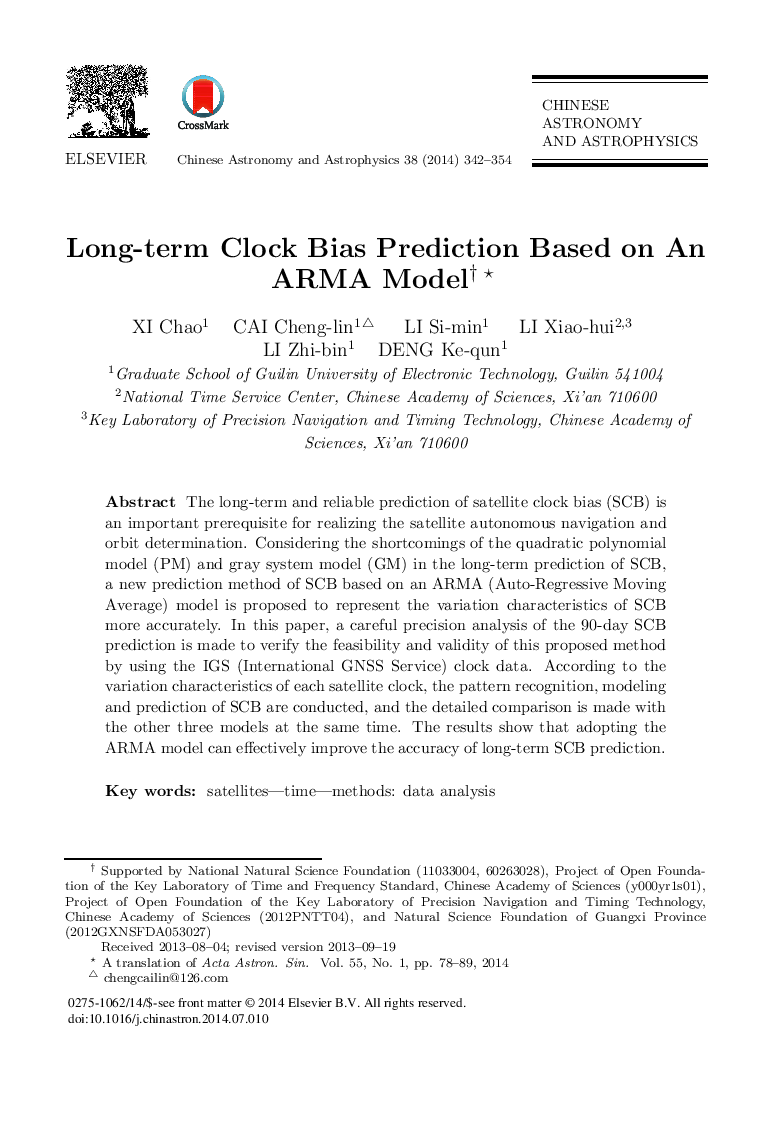| Article ID | Journal | Published Year | Pages | File Type |
|---|---|---|---|---|
| 1771925 | Chinese Astronomy and Astrophysics | 2014 | 13 Pages |
The long-term and reliable prediction of satellite clock bias (SCB) is an important prerequisite for realizing the satellite autonomous navigation and orbit determination. Considering the shortcomings of the quadratic polynomial model (PM) and gray system model (GM) in the long-term prediction of SCB, a new prediction method of SCB based on an ARMA (Auto-Regressive Moving Average) model is proposed to represent the variation characteristics of SCB more accurately. In this paper, a careful precision analysis of the 90-day SCB prediction is made to verify the feasibility and validity of this proposed method by using the IGS (International GNSS Service) clock data. According to the variation characteristics of each satellite clock, the pattern recognition, modeling and prediction of SCB are conducted, and the detailed comparison is made with the other three models at the same time. The results show that adopting the ARMA model can effectively improve the accuracy of long-term SCB prediction.
